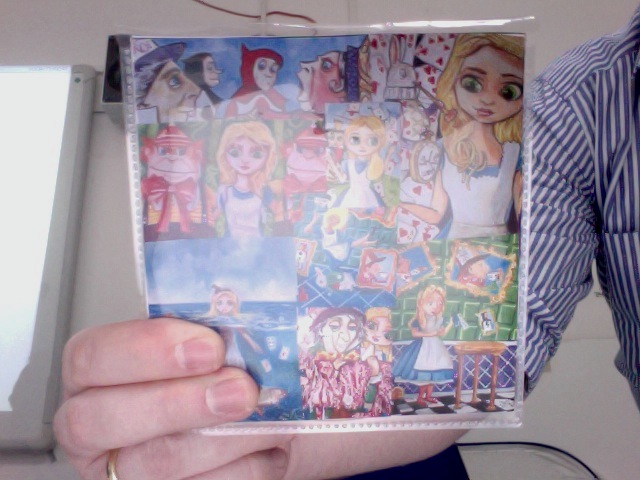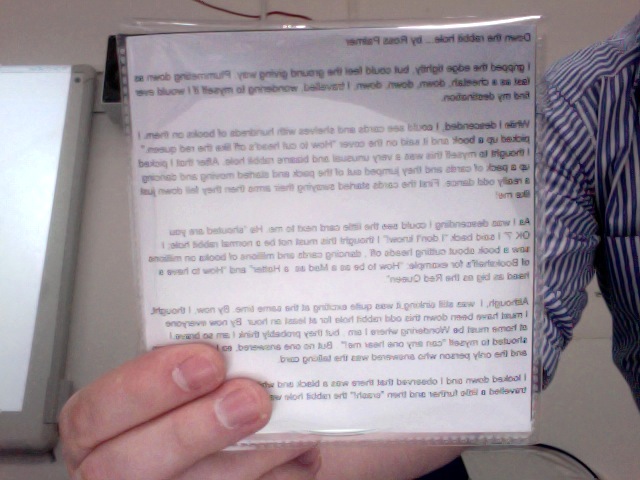Before I could join in with Day Four’s activities, I decided that I needed to better understand the concept of ‘Connectivism’.
Connectivism
Stephen Downes states that: “At its heart, connectivism is the thesis that knowledge is distributed across a network of connections, and therefore that learning consists of the ability to construct and traverse those networks.” Which in my mind, could easily be describing my experience in using Twitter to develop a personal learning network (PLN). Through Twitter I have connected with a network of individuals, shared and aggregated resources and ideas, which has resulted in both learning and the (co-)construction of new ideas and resources.
He goes on to outline four process that are integral to connectivism:
- Aggregation
- Remixing
- Repurposing
- Feeding Forward
Considering this list closely, it would appear that connectivism is very similar to constructivism, particularly given that these activities encourage sharing, creation and collaboration.
However, Downes et al., see connectivism as a distinct model of its own. In ‘What is the unique idea in connectivism’, George Siemens explains that “learning is defined as the creation of new connections and patterns as well as the ability to maneuver around existing networks/patterns.” While this sounds very similar to Downes’ interpretation, Siemens emphasis on the “creation of new connections” implies that the learning occurs through networking as opposed to the act of construction. Artefacts created, either individually or collaboratively during MOOCs are, to some degree, a byproduct. The dialogue and connections generated before, during and after their creation is where the learning occurs. The network is the essence of connectivism; the essence of the MOOC.
Siemens continues, asserting that “Coherence. Sensemaking. Meaning. These elements are prominent in constructivism, to a lessor extent cognitivism, and not at all in behaviourism. But in connectivism, we argue that the rapid flow and abundance of information raises these elements to critical importance.” This is certainly true, and within MOOC MOOC this has been more than evident. However, for some participants, the sheer scale of information generated by the network can be overwhelming. Therefore, I would argue that, to be successful in a MOOC, you have to be well-versed in the use of tools that can help you make sense of the information. Moreover, as I have previously written, it is important for participants to be willing to plot their own paths and not feel that they have to read/do everything.
Moreover, connectivism, is a pedagogy that places significant emphasis on interdependence. Perhaps then the most important facet of the MOOC acronym is ‘openness’. Relatively free from geographical, economic, social and cultural constraints, the cMOOC gives rise to democratised, networked-learning that emphasises participation and collaboration.
Participant Pedagogy
Day Four’s task was to consider participant pedagogy. I entered into this having not really had time to look at the reading, but with some strong views about learner participation and the student/teacher paradigm. In my own words
Learning is and should always be in the hands of the learner.
A number of us, decided that some face-to-face interaction was needed and so a Google+ Hanout was instigated. After a few technical problems, Sheila MacNeil, Martin Hawksey, David Kernohan, Alan Ng and I engaged in a fruitful discussion.
The discussion covered a number of related topics:
- the pedagogical models found within the cMOOC/xMOOC dichotomy;
- the position of teacher/lecturer and the way that we (educators) view education/learning;
- the problems with systematised education (sage on the stage, teach to the test culture);
- participant pedagogy, including the problem of the teacher/student paradigm
As I suggest a number of times during the discussion, I believe that the dichotomy of the traditional student/teacher relationship is a false one; based on an out of date system of education. If our goal is to foster a love of learning, then I believe it is necessary for educators to position themselves as learners, facilitators, guides; not as experts. A scary prospect for some.
Pete Rorabaugh argues that:
Critical pedagogy, no matter how we define it, has a central place in the discussion of how learning is changing in the 21st century because critical pedagogy is primarily concerned with an equitable distribution of power… Digital tools offer the opportunity to refocus how power works in the classroom. In its evolution from passive consumption to critical production – from the cult of the expert to a culture of collaboration – the critical and digital classroom emerges as a site of intellectual and moral agency.
This is certainly a thesis that I can support, given that I would describe my own classroom in similar terms. However, I am left asking whether or not such an evolution requires ‘digital tools’ to achieve such equity? Can learning not be democratised within traditional educational settings, without the influence of technology? Does this not, have more to do with shifting beliefs and values about pedagogy and the student/teacher paradigm?
Teo Bishop, makes a similar case, asserting that:
A teacher and a student, when presented as text on the screen, look exactly the same. They are just text. The internet is the Great Equalizer not only because it provides the world with a seemingly unlimited amount of information, but because it reduces us all to font, to pixels, to bits of sound and noise that only begin to approach our full complexity.
Perhaps… although I think this is a naive view. Technology, in this case ‘the internet’, is being given far too much credit. Social status, expertise and power are in no way absent from the world wide web. Blogs and social networks may have given everyone a voice, but that does not mean that everyone is listening.
Technology, itself, does not have the power to improve education. Nor does it have the power to democratise it. The participatory pedagogies alluded to by both Rorabaugh and Bishop require a change in values and beliefs on the part of not just educators, but society as a whole. Moreover, they require a dramatic shift in the priorities of educational institutions. It’s better economics for institutions such as Stanford and MIT to proffer xMOOC style courses, as the investment in participant-based co-creation and the development of networks is labour intensive and difficult to control.
Earlier in the article, Bishop asked what I think is a more important question: “I’m in a position where I can do my best work, and inspire the most dialogue, by openly not having the answers. Do teachers have that luxury?” Yes they do, but they have to be prepared to take risks; to be willing to redefine their role within the classroom. As I shared in the Hangout, I do not consider myself to be a teacher anymore. I am a learner, facilitator, and guide.
On reflection, I wonder to what extent teaching Media Studies has impacted on the way I view education and my role within it. Media Studies is in a continual state of evolution, built on theoretical ideas rather than absolutes; responding to a changing landscape, influenced by social and technological developments. There is always something new to learn, to understand, at no point would I therefore, profess to be an expert.
Jesse Stommel (on Twitter) shared: “Every semester I teach at least one book that I’ve never read before. I read it with the students and actively under-prepare.” Within his words, there is a clue to a deeper philosophy, a belief in shared, interdependent learning between teacher and student. I take a similar approach with my own students, wishing to participate in a ‘learning journey’, where the opinions of student and teacher are of equal value.
Of all of the reading that was provided to support this part of the course, I found Howard Rheingold’s article ‘Toward Peeragogy’ provided the most compelling narrative. Reflecting on the development of what he has coined “peeragogy”, Rheingold draws out, what I believe to be, key tenets in encouraging independent/interdependent learning in any classroom.
In retrospect, I can see the coevolution of my learning journey: my first step was to shift from conventional lecture-discussion-test classroom techniques to lessons that incorporated social media, my second step gave students co-teaching power and responsibility, my third step was to elevate students to the status of co-learner. It began to dawn on me that the next step was to explore ways of instigating completely self-organized, peer-to-peer online learning.
In his classroom, both online and in the lecture hall, Rheingold’s “peeragogy” is built on ‘openness’, ‘social media’, and ‘student voice/choice’ – the same three tenets advocated by Catherine Cronin during a presentation at #EdTech12. Three tenet that can easily be applied to cMOOCs.
The Role of the cMOOC
Returning to one of the articles, from day one of MOOC MOOC, I would argue that Siemens is correct. c“MOOCs are really a platform”, out of which an interdependent network is built. A network that encourages, openness, social connectedness/collaboration, and voice/choice. The cMOOC is nothing without its participants and its participants are in control of the pedagogy.




